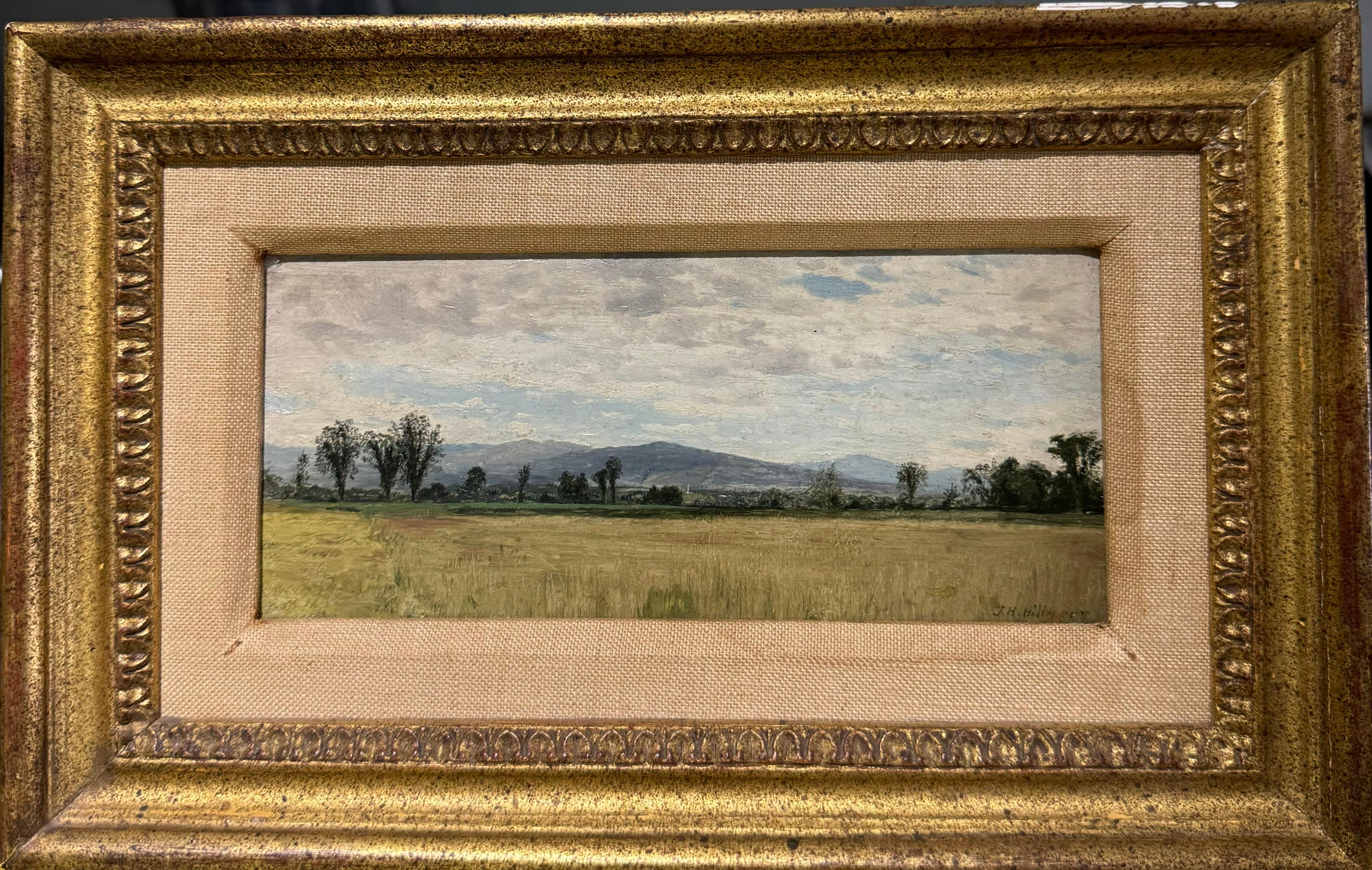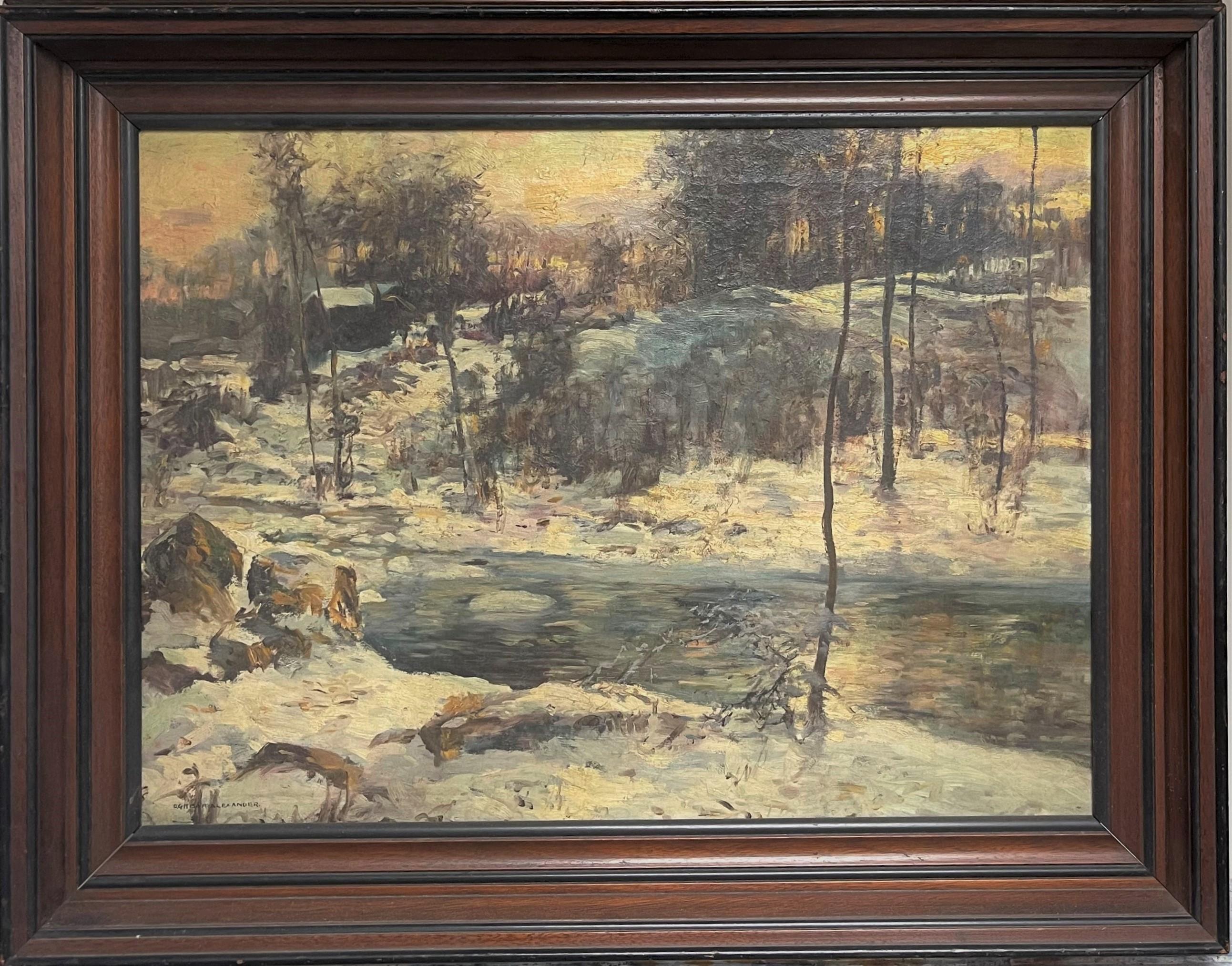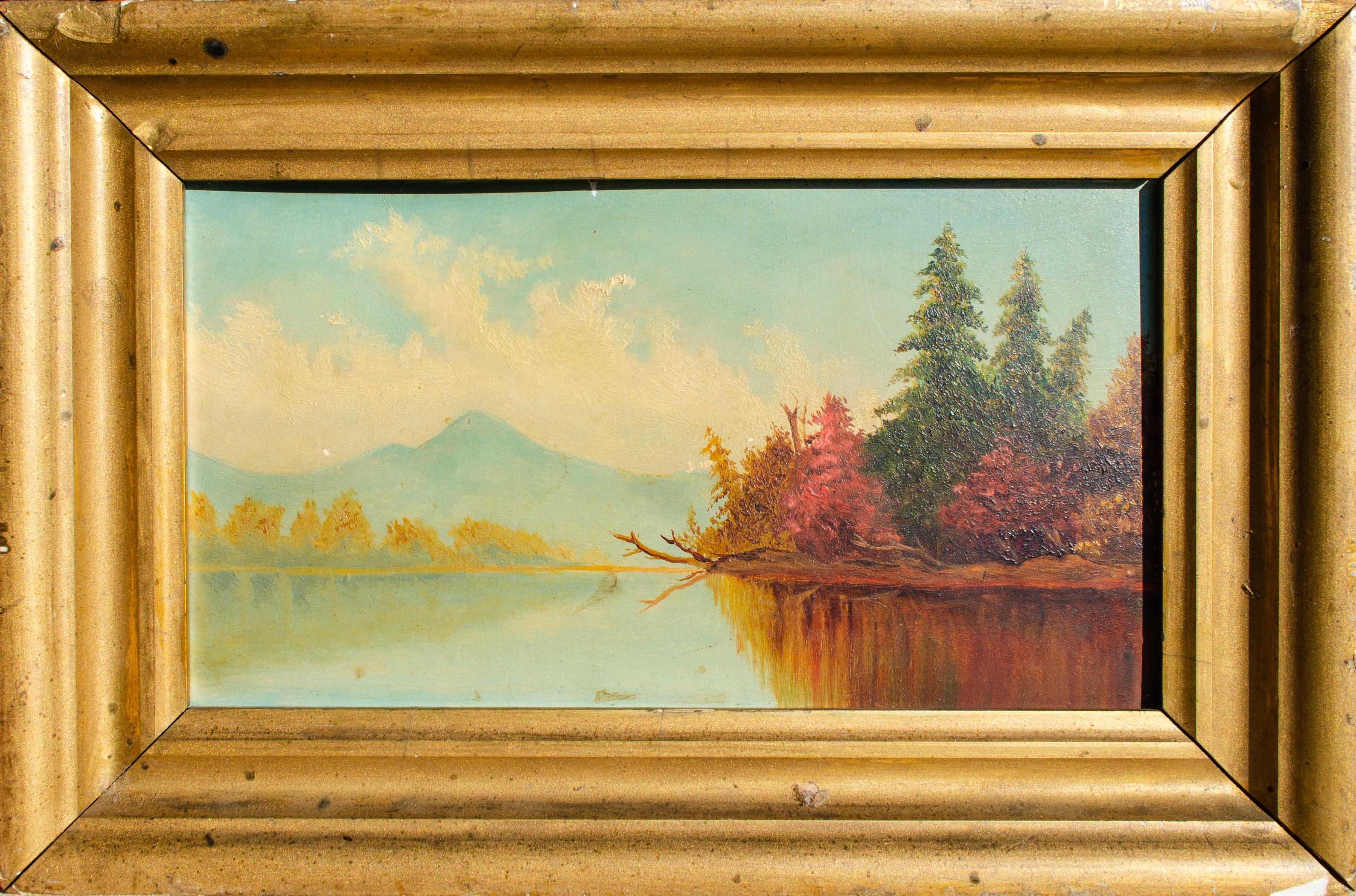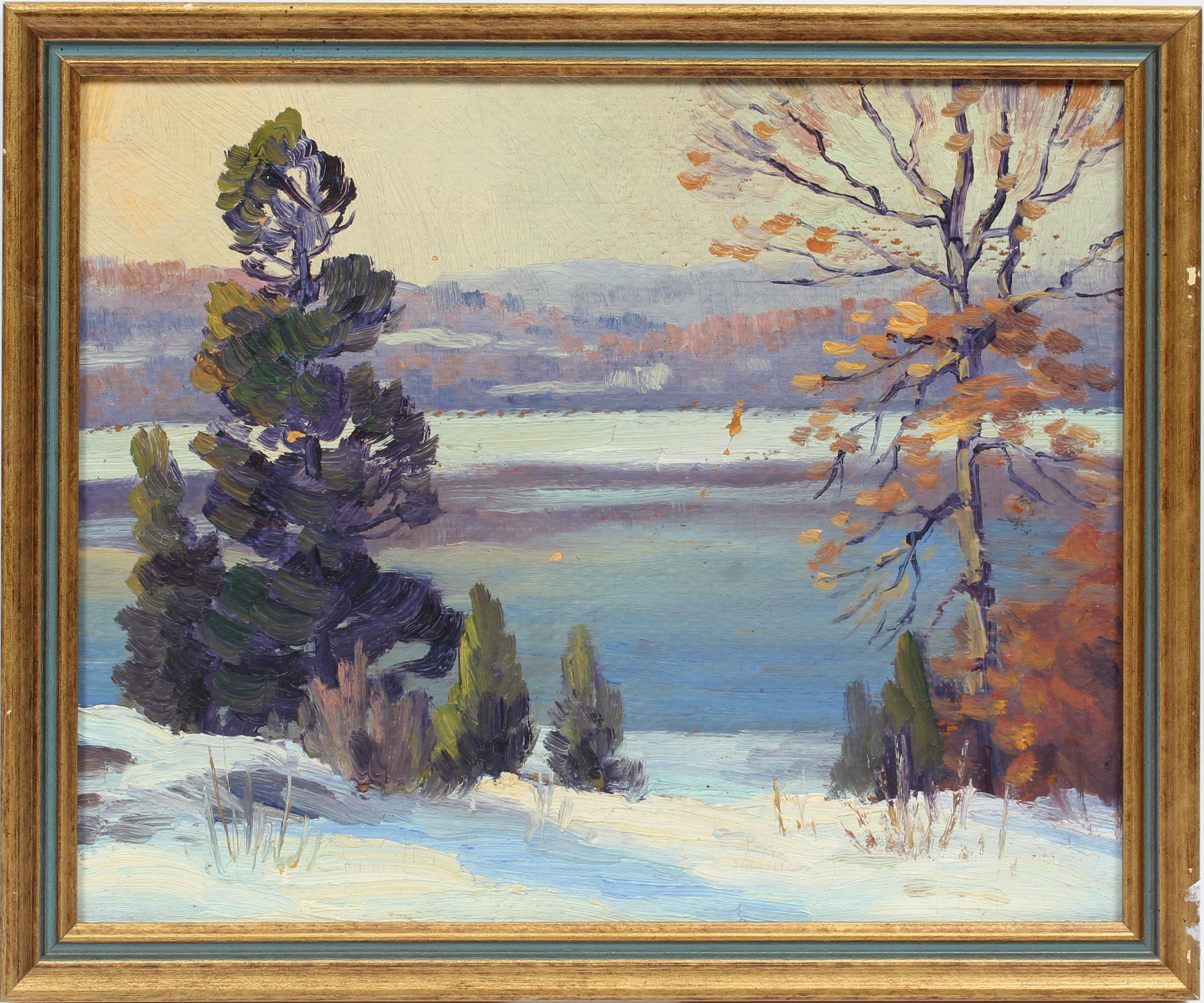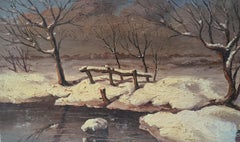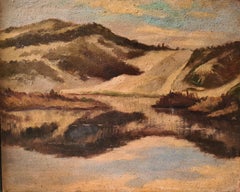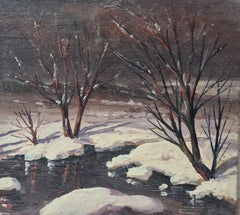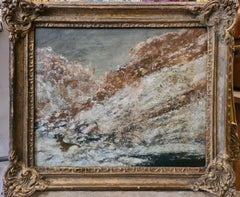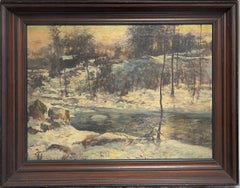Items Similar to Hudson River School Large American Impressionist Landscape Wisconsin in the Snow
Video Loading
Want more images or videos?
Request additional images or videos from the seller
1 of 18
Leroy Ferdinand JonasHudson River School Large American Impressionist Landscape Wisconsin in the Snow1926
1926
$2,300.44
$2,875.5420% Off
£1,712.21
£2,140.2620% Off
€1,920
€2,40020% Off
CA$3,151.02
CA$3,938.7820% Off
A$3,504.62
A$4,380.7820% Off
CHF 1,830.01
CHF 2,287.5120% Off
MX$42,647.55
MX$53,309.4320% Off
NOK 23,371.97
NOK 29,214.9620% Off
SEK 21,918.78
SEK 27,398.4820% Off
DKK 14,616.29
DKK 18,270.3620% Off
Shipping
Retrieving quote...The 1stDibs Promise:
Authenticity Guarantee,
Money-Back Guarantee,
24-Hour Cancellation
About the Item
A large scale American Hudson River School Impressionist landscape of a snow scene, most probably Wisconsin, by Leroy Ferdinand Jonas. The painting is signed and dated bottom right and presented in a fine gilt frame.
An imposing view of a snowy landscape most probably the artist's native Wisconsin. Jonas has captured the grandeur of the scene with the contrast between the thick lush snow and the rich colours of the foliage and leaves on the trees. His impasto technique is very characteristic of the American Impressionists as is the subject and sense of scale. A really beautiful painting which because of its scale would be a statement piece in any room.
LeRoy Jonas was born in the town of Texas, Marathon County, Wisconsin, on April 18, 1897, son of Johann F. and Marie (Borchardt) Jonas. He was educated in Wausau public schools and attended the Chicago Art Institute, where he studied under John Norton, noted for his murals, Leopold Seifert, noted for his portraits, and William Wilmovsky, a landscape artist. He worked as a commercial artist and Conservator of Fine Arts there. Upon graduating, he painted for a while in Door County, Wisconsin and was then awarded a scholarship to study under Leon Lundmark, one of the most noted marine painters of his day. He worked with him in Portland, Maine, and on the shores of Lake Superior. After World War I, Jonas returned to Wausau to concentrate on painting his favourite scenes, the North Woods and Lake Superior. He also taught art for seven years in vocational schools in Wausau and Stevens Point. Countless of his paintings are found in private collections throughout the state and the country. In 1934 he painted an 8 by 18 foot lumberjack mural for the old Wausau City Hall. Jonas also painted Indian scenes in Wausau East High School and he also painted a noted portrait of Silas B. Tobey.
The Hudson River School was a mid-19th-century American art movement embodied by a group of landscape painters whose aesthetic vision was influenced by Romanticism. Early on, the paintings typically depicted the Hudson River Valley and the surrounding area, including the Catskill, Adirondack, and White Mountains.
Works by second-generation artists expanded to include other locales in New England, the Maritimes, the American West, and South America.
American Impressionism was a style of painting related to European Impressionism and practiced by American artists in the United States from the mid-nineteenth century through the beginning of the twentieth. The style is characterized by loose brushwork and vivid colours with a wide array of subject matters but focusing on landscapes and upper-class domestic life.
Impressionism emerged as an artistic style in France in the 1860s. Major exhibitions of French impressionist works in Boston and New York in the 1880s introduced the style to the American public. The first exhibit took place in 1886 in New York and was presented by the American Art Association and organized by Paul Durand-Ruel. Some of the first American artists to paint in an impressionistic mode, such as Theodore Robinson and Mary Cassatt, did so in the late 1880s after visiting France and meeting with artists such as Claude Monet. Others, such as Childe Hassam, took notice of the increasing numbers of French impressionist works at American exhibitions.
Impressionism was initially unpopular in the United States. At the first exhibit in 1886, Americans were attracted to the landscape paintings but were offended by the realist figures and nudity depicted in other paintings. American artists were hesitant to adopt the style of Impressionism while studying in France as it was created as a radical rejection of tradition at the Academy and American artists hoped to gain acceptance through their traditional academy studies. Overtime, American patrons began to accept the abstract forms of Impressionism, especially as American artists, such as Mary Cassatt, began to adopt the styles of French Impressionism.
Unlike early Renaissance painters, American Impressionists favoured asymmetrical composition, cropped figures, and plunging perspectives in their works in order to create a more "impressionist" version of the subject. In addition, American impressionists used pure colour straight from the tubes to make the works more vibrant, used broken brushstrokes, and practiced "impasto"- a style of painting characterized by thick raised strokes. European impressionists painted tranquil scenes of landscapes or the lower and middle classes. American impressionists focused on landscapes like the European impressionists, but unlike their European counterparts, American impressionists also painted scenes of quiet domesticity, in contrast to the emergence of industrialization.
As railroads, automobiles, and other new technology emerged, American impressionists often painted vast landscapes and small towns in an effort to return to nature. Before the invention of collapsible paint tubes artists were often confined to using subjects in their studios or painting from memory. With the invention of paint tubes in 1841, artists could transport their paint and easily paint in nature.
- Creator:Leroy Ferdinand Jonas (1897 - 1981, American)
- Creation Year:1926
- Dimensions:Height: 34.65 in (88 cm)Width: 41.34 in (105 cm)Depth: 1.78 in (4.5 cm)
- Medium:
- Movement & Style:
- Period:
- Condition:Good overall condition. two areas of old restoration, see photos.
- Gallery Location:Cotignac, FR
- Reference Number:Seller: LG/Jonas/Wisconsin.1stDibs: LU1430212651202
About the Seller
5.0
Platinum Seller
Premium sellers with a 4.7+ rating and 24-hour response times
Established in 2000
1stDibs seller since 2020
248 sales on 1stDibs
Typical response time: <1 hour
- ShippingRetrieving quote...Shipping from: Cotignac, France
- Return Policy
Authenticity Guarantee
In the unlikely event there’s an issue with an item’s authenticity, contact us within 1 year for a full refund. DetailsMoney-Back Guarantee
If your item is not as described, is damaged in transit, or does not arrive, contact us within 7 days for a full refund. Details24-Hour Cancellation
You have a 24-hour grace period in which to reconsider your purchase, with no questions asked.Vetted Professional Sellers
Our world-class sellers must adhere to strict standards for service and quality, maintaining the integrity of our listings.Price-Match Guarantee
If you find that a seller listed the same item for a lower price elsewhere, we’ll match it.Trusted Global Delivery
Our best-in-class carrier network provides specialized shipping options worldwide, including custom delivery.More From This Seller
View AllA Winter Wonderland, Barbizon School Snowscape.
Located in Cotignac, FR
An oil on panel view of a winter snow scene by Boggio. The painting is signed bottom right.
A charming view of a snow scene, a river running by a stile heavy with snow.
Category
Mid-20th Century Barbizon School Landscape Paintings
Materials
Oil, Board
Impressionist Barbizon School Oil Landscape, Dunes a Paris Plage, Le Touquet.
By Georges Guerin
Located in Cotignac, FR
1940s French Impressionist Barbizon School oil on panel view of the dunes and beaches at Paris Plage in Northern France. The painting is titled, dated (23rdMay 1940) and signed to th...
Category
Mid-20th Century Landscape Paintings
Materials
Oil, Board
A Winter Wonderland, Barbizon School Snowscape.
Located in Cotignac, FR
An oil on panel view of a winter snow scene by Boggio. The painting is signed bottom right.
A charming view of a snow scene, a river running by a bank heavy with snow.
Category
Mid-20th Century Barbizon School Landscape Paintings
Materials
Oil, Board
'Paysage de Neige Dans le Jura, Avec Chevreuil'. Mid 19th Century Oil on Canvas.
By Gustave Courbet
Located in Cotignac, FR
Mid 19th century French oil on canvas of a snow scene in the Jura by Gustave Courbet. Signed bottom right in his characteristic 'ox-blood' red.
Our painting is very similar in compo...
Category
19th Century Impressionist Landscape Paintings
Materials
Canvas, Oil
French Impressionist Barbizon School Landscape, Forest at Mont-de-l'Enclus
By Georges Guerin
Located in Cotignac, FR
1930s French Impressionist Barbizon School oil on panel view of a forest by Georges Guerin (1910-1984). The painting is signed bottom left and is also titled and dated to the back of...
Category
1930s Impressionist Landscape Paintings
Materials
Oil, Board
A Christmas Winter Wonderland, Barbizon School Snowscape.
Located in Cotignac, FR
An oil on panel view of a winter snow scene by Boggio. The painting is signed bottom right.
A charming view of a snow scene, a river running under a bridge heavy with snow. A Christ...
Category
Mid-20th Century Barbizon School Landscape Paintings
Materials
Oil, Board
You May Also Like
American Impressionist Artist Karl Rudolph Krafft oil painting Winter Scene
Located in Chesterfield, NJ
Winter Scene
oil/canvas
20 x 24 image size, 23.75 x 27.50 framed
Here is a very nice winter snow scene oil painting on canvas by Midwest American Artist Karl Rudolph Krafft. Origina...
Category
21st Century and Contemporary Impressionist Landscape Paintings
Materials
Oil
1857 American Hudson River Rockland County Landscape Painting KENNEDY Gallery
By John Henry Hill
Located in New York, NY
John Henry Hill
1839-1922
Signed lower right
Dated: 1857
Sight size: 3 3/4 x 7 1/2 inches
Overall size: 7 3/4 x 11 1/2 inches
oil on panel
Good condition
Kennedy Gallery Label Verso
...
Category
1850s Hudson River School Landscape Paintings
Materials
Wood Panel
Winter Oil Painting Snow Bound by Clifford Grear Alexander Massachusetts
By Clifford Grear Alexander
Located in Chesterfield, NJ
Snow Bound
oil on stretched canvas. Image is 16 x 22 unframed and 21.5 x 27.5 framed.
The painting signed front LL in what looks like an original frame. Painting could use a light ...
Category
Early 20th Century Impressionist Landscape Paintings
Materials
Oil
Winter Landscape
By Charles Jacob Jung
Located in Milford, NH
A fine impressionist winter landscape by German American artist Charles Jacob Young (aka C. Jac Jung) (1880-1940). Young was born in Rodenbach, Bavaria, Germany, immigrated to the Un...
Category
1940s American Impressionist Landscape Paintings
Materials
Oil, Board
19th Century White Mountain Landscape, Unknown American School
Located in New York, NY
Unknown White Mountain Artist
White Mountain Landscape, 19th Century
Oil on board
5 x 9 1/4 in.
Framed: 7 3/4 x 11 3/4 in.
Category
19th Century Hudson River School Figurative Paintings
Materials
Board, Oil
Antique American Impressionist Landscape Snow River Original Oil Painting
By Charles Gordon Harris
Located in Buffalo, NY
Antique American impressionist landscape oil painting by Charles Gordon Harris (1891 - 1963). Oil on board, circa 1920. Signed. Displayed in a period giltwood frame. Image, 11"L x...
Category
1920s Impressionist Landscape Paintings
Materials
Canvas, Oil
More Ways To Browse
White Mountain School Of Art
Monet Style Landscape
Hudson River Painters
Texas Landscape Large
Hudson River School Oil Paintings
West Texas Landscape
Landscape Paintings Hudson Valley
New Hope Impressionist Art
New Hope Impressionist
Very Large Antique Landscape Oil Paintings
Hudson Valley Oil Paintings
Antique School Doors
Hudson River School Antique
Snow River
19th Century Hudson River School Paintings
Portland Maine
Antique Native American Painting
American School 19th Century Portrait Painting
